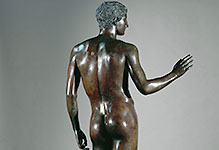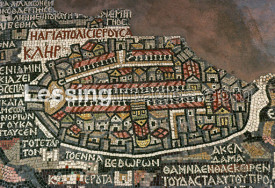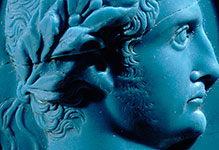
Antiquity
Ancient Egypt, Ancient Greece, Imperial Roman Period, Ancient Middle East.

#03010210
Obsidian amulet in the shape of two fingers, Egypt, Late Period, after 600 BC. T...

#03010211
Faience vessel decorated with a depiction of the god Heh, from tomb 61,Enkomi, c...

#03010212
Mummy of a cat, from Abydos, Upper Egypt Roman period, perhaps 1st century. Ani...

#03010213
Textile with winged figures in a boat, Egyptian, Hellenistic period,305-30 CE. T...

#03010214
Coffin of a woman, Egyptian, Early Roman period, 1st BCE- 1st CE. Anthropoid cof...

#03010215
Terracotta figurine of a woman riding on a pig, Hellenistic, Egypt, 1st BCE. It...

#03010217
Bronze head of Emperor Augustus, from Meroe, Sudan, 27-25 CE. Part of a statue...

#03010219
Osorkon I,pharaoh.Sandstone, H: 60 cm,end 19th BCE. This bust of Osorkon (aroun...

#03010220
Sphinx with proto-Sinaitic inscriptions, from Serabit el-Khadim, Sinai, Middle K...

#03010222
Pair of disc and amphora earrings, Hellenistic (Ptolemaic), c200 BC. Earrings wi...

#03010223
Rag doll, Roman, made in Egypt, 1st-5th century. This doll is fairly well-propor...

#03010224
Scene in the swamps of the Nile river Around 1450-1400 BCE (in the middle of th...





